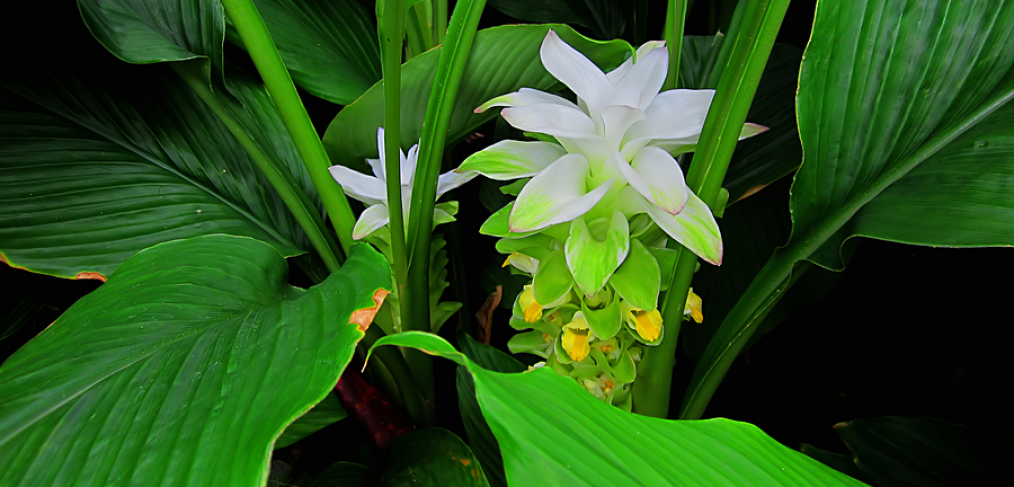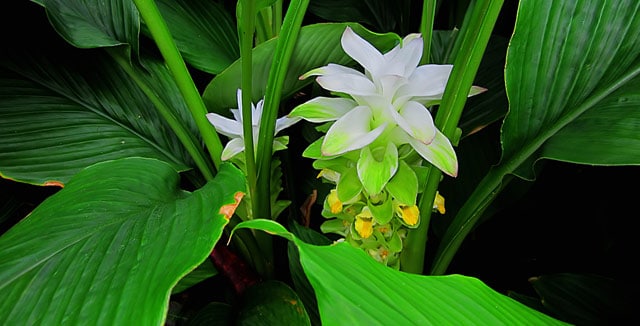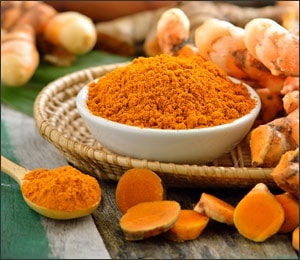
Turmeric: Easy To Grow and Reap the Amazing Benefits

You may have heard about turmeric as a tea, a spice to add to curry dishes or even a natural dye for Easter eggs or fabric. You might also have heard of turmeric’s active ingredient curcumin, which has been successfully used to treat all kinds of illnesses including cancer. I’m here to tell you, turmeric has been used to do all of these things and much more.
Uses of Turmeric

The whole turmeric plant is edible. Leaves are used as a wrap for steamed fish and the flowers can be used to spice up a salad or eaten on their own.
That’s just what turmeric – or Curcuma longa – is traditionally used for. South Asians use it so often in dishes because it’s easy to grow and proliferate. However, it can act like a miracle drug. The powdered root contains iron and manganese and has many antioxidants.
Benefits of Turmeric
- Mood Balancer
The Journal of Affective Disorders reported a randomized, double-blind, placebo-controlled study that showed noticeable results with turmeric as a mood stabilizer.In the study, two groups were compared. The first group received curcumin daily while the second group received a placebo. Mood and anxiety score tests after 8 weeks showed significant symptom improvements with curcumin compared with the placebo.
- Wound Care
A study in the September 2014 issue of Life Sciences found that curcumin has healing properties for wounds by soothing irritation and promoting oxidation.A study in the October 2006 issue of Molecular and Cellular Biochemistry studied a topical turmeric application for wounds in rats. It showed supported collagen synthesis rates, improved wound contraction and increased tissue strength and cell proliferation around the wound. Another study also showed the antioxidant properties of turmeric.
- Pain & Inflammation Relief
Another exciting property of turmeric is its ability to ease aches and pains similarly to more conventional options. A study in the March 2014 issue of the Journal of Clinical Interventions in Aging examined turmeric’s effects on knee discomfort. Participants experienced relief from joint stiffness and significantly fewer side effects than those using more mainstream pain management plans.The anti-inflammatory properties of curcumin have also been studied. Tissue swelling is the body’s way of fighting infection and protecting itself but it has been theorized that most people are suffering from an overabundance of swollen and irritated tissue system-wide that contributes to a host of diseases, because of the toxic and stressful modern environment.
- Balance Blood Sugar
The Journal of Endocrinology published a study in November 2014 looking at the effects of curcumin on insulin-producing cells within the pancreas. These are called Beta cells (or B-cells) and Islet cells.They correspond to imbalanced blood sugar levels which, as many of us know well by now, are the cause of the epidemic of health problems we have in our country. The B-cell lines and human islet cells were addressed with preparations of turmeric and had positive benefits.
- Normalize Lipid Levels
Scientists have been studying and hypothesizing the effects of turmeric on lipid levels since the 1990’s. There are numerous studies out there. Some show an impressive reduction in bad lipids for the groups who supplemented with turmeric.There is a study published in Phytotherapy Research in November 2011 with one group being given curcumin in small or large doses and a control group being given vitamin e only. In 7 days the balancing effect on lipid profiles showed up in a statistically significant way for the group being given small doses of turmeric.
- Stomach Lining Support
Turmeric also has a soothing effect on the digestive tract, which is well-known to cultures that use it frequently in all their dishes. It especially protects the lining of the stomach against the effects of acidic foods. In one study, researchers tested its effects against an acidic solution and found it protected the cells of the stomach lining against ulcers.
Turmeric can also be used as a beautiful natural dye if you want to do away with chemical dyes for fabric or Easter eggs. It’s actually used widely in food dyes for yellow rice, mustard, margarine, and soups.
How to Grow Turmeric
You can grow turmeric in your backyard, provided you wait until the weather is warm and make sure it gets plenty of water every day as it is a rainforest plant. Curcuma longa is deciduous from fall until late spring, so it is easy to dig up and overwinter inside if you live outside of zones 7b-11.
To find rhizomes of turmeric to plant, search for “hidden ginger,” Curcuma longa, Curcuma zedoaria or Curcuma aromatica. These are the only rhizomes which should be grown as spices – even though many others exist.
Even though it’s a rain forest plant, turmeric is hardy and can withstand drought and flooding. It can grow in shade and soggy soil. Of course, the best is moist, well-drained soil as for any plant. But it can also thrive in clay. When planting in full sun, make sure the soil stays constantly wet.
If you do live in zones 7b-11, your turmeric can overwinter in the ground. If not, dig them up and store them in a cool place through the winter and replant in late spring. As long as the roots don’t freeze, your turmeric will be healthy.
When The Plant Starts Growing
When it starts growing, your turmeric plant will grow pleated leaves which will eventually become plumes four feet tall. Green and white cones of yellow flowers will pop out between the leaves in summer. Once a stem has finished flowering cut it down to the ground to encourage new growth. In late fall, leaves will begin to turn yellow. Cut back or let them die back naturally.
Once you dig up the rhizomes in the fall, rinse off the excess soil, snap off mushy and rotting pieces, and let them air dry before storing. Store them in dry peat moss or sawdust until spring. Check up on them periodically for rot or pests.
How to Make Turmeric Powder
Of course, the rhizomes are what we use for turmeric spice! What a great way to have more fresh organic turmeric nearby and ready to use. Here’s the general process:
- Soak and scrub the rhizomes thoroughly
- Boil for 45 minutes
- Peel off skins
- Let them dry out in shade for at least a week
- Break up the boiled, peeled and dried rhizomes with a hammer
- Grind up using a mortar and pestle or a food processor
Take Away
With all the health benefits, the abundant beauty of the plant itself, and the ease with which turmeric will establish itself in your garden – this choice is a no-brainer! Find yourself some rhizomes and get started this spring!

